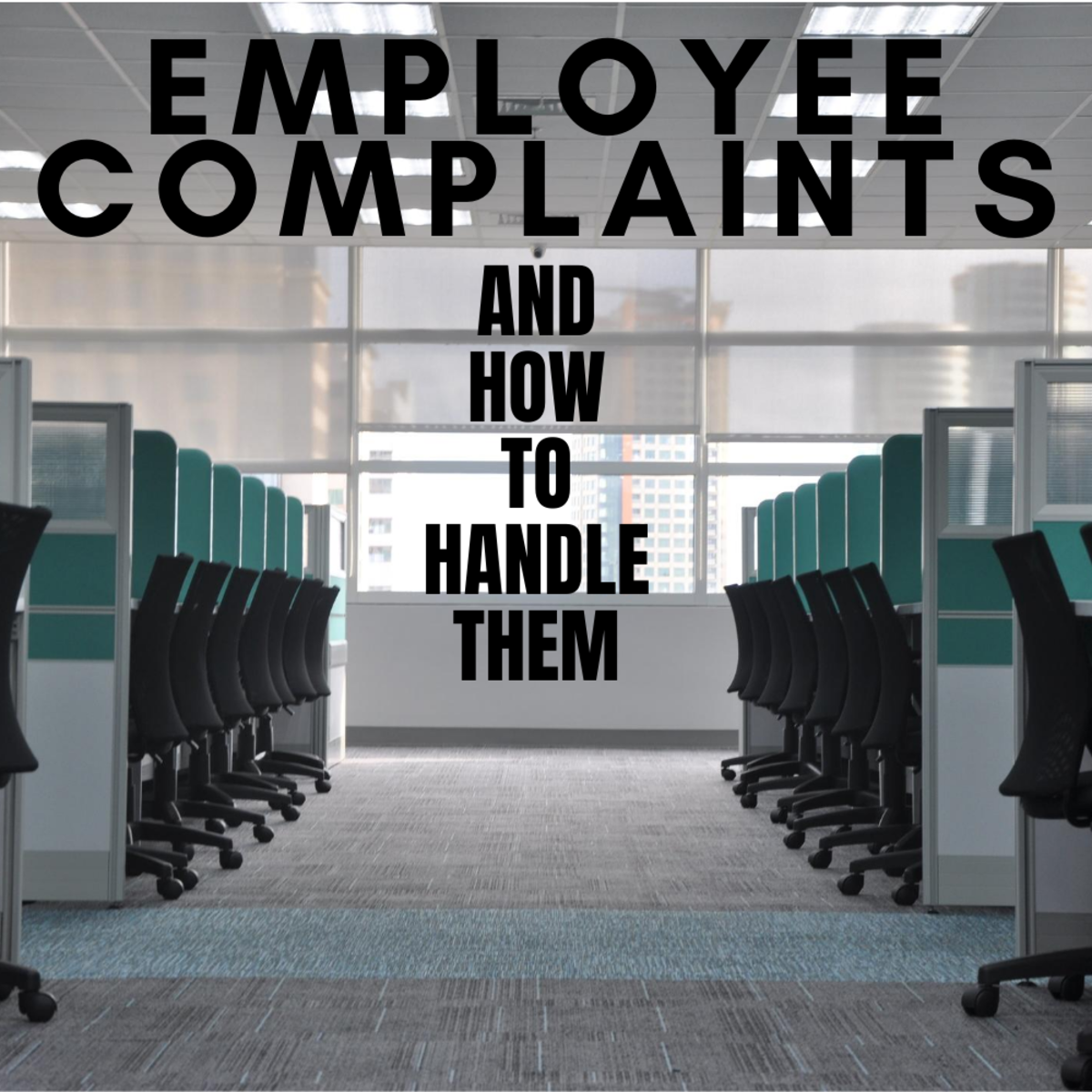How to Discuss Problems With a Troubled Employee
Christine McDade is an experienced human resources manager.

Employers should be prepared to receive employees who need to discuss problems that they want to bring to management's attention. Problems may be of a personal or workplace nature. Whatever the issue, managers must be able to meet with the employee to determine what, if any direction, should be given to the employee needing help. Being prepared to receive them means that the manager will be able to show empathy toward the employee and and then display leadership skills of discernment and wisdom to determine the next best step for the employee.
Whatever the cost of the employee's distress, managers should take the time to meet with them in a manner that is both inviting and supportive. Employees appreciate a manager who is willing to work with them during difficult times. The rewards that will be returned from the employee may be loyalty, dedication and a renewed interest in doing a good job.

Tips about the Meeting
In order to receive the employee in a comfortable, non-threatening manner, there are some basic tips to consider:
- Location: Conduct the meeting in a private, quiet location which avoids as much distraction as possible. Employees who are pouring out their hearts to the manager do not want to hear people laughing, talking, etc., in the background from coworkers who are doing their own jobs. As a manager, I have had the experience when I had to excuse myself to step outside of the meeting to request that coworkers take their discussion to another location. It is usually just harmless fun in the middle of being busy but such behavior appears insensitive to the employee who is troubled and trying to explain the situation to his/her supervisor. In addition, employees will be more comfortable if they think you are having the meeting in a secure, quiet place that the conversation will not be overheard by others.
- Date and time: Holding the meeting at a time and on a date that is convenient for the employee will be important. If the employee works early, the manager should be flexible to schedule the meeting so that the employee does not have to wait until late in the day to meet. Or, if the employee works the night shift, the manager may want to schedule a time at the end of the normal work day but at the start of the employee's shift.
- Prevent Interruptions: At all costs, managers must avoid interruptions from disrupting the meeting with the troubled employee. The meeting will go much more smoothly if the employee feels they have the manager's undivided attention. Letting phone calls go to voicemail, not checking emails or texts during the meeting, and keeping the time blocked on the calendar for the meeting will indicate to the troubled employee that the manager does value the meeting and wants to help him/her overcome the issue of concern.
When the items above are taken into consideration for the scheduling of a meeting with a troubled employee, the manager is setting the scene for a successful conversation to occur with the employee needing assistance.
Control the Meeting
Controlling the progress of the meeting will be very important for a successful outcome. When meeting with a troubled employee and, if staffing allows, managers may desire to have a witness sit in the meeting to get another perspective on what is being discussed. The discussion should be controlled in a manner that will encourage the employee to discuss the issue by providing the necessary details that the manager needs to know. To avoid the appearance of intimidation, the witness does not need to ask but a few questions, if any, during the discussion. Rather, questions should be the responsibility of the manger who is hosting, and otherwise leading, the meeting. The manager should ask pertinent questions and give plenty of opportunity to receive the information from the employee. As mentioned in other supervisory hubs, managers who exercise good listening skills will be able to communicate effectively with employees.
Offer Solutions
After the employee has explained the situation that is causing him/her the trouble, it will be important to offer advice and direction to address it. As the employer has an interest in seeing that this employee is able to move forward, there must be some avenues for overcoming the situation that is causing the employee a problem.
If the issue is work-related, consider the following:
- Is there a policy violation? If the employee is complaining about some form of policy being violated, the manager will want to look into the matter more closely to confirm. The manager can take notes from the meeting and then look into the situation immediately.
- Is there a form of workplace harassment and/or discrimination? Since employers are tasked with following applicable laws that govern employee rights, it is imperative that the matter be investigated immediately, as well.
- Should an investigation be conducted? If the meeting presents an allegation of harassment or discrimination, the manager may request the allegation be put in writing to move forward with an investigation. Investigations should be conducted thoroughly, and in a timely manner.
If this issue is personal, consider the following:
- Are there confidentiality issues to be considered? If the matter is something that is very sensitive or personal to the employee, managers should take care to preserve the confidentiality of the matter. The witness, if there is one, should be put on notice that the matter is not to be discussed with anyone in or outside of the workplace. The managers should also assure the employee that his/her concerns will be kept in confidence.
- Is there protected health information that requires referral to the employer' HR Department? If the employee starts to discuss personal health information, it will be advisable to direct the conversation to the Human Resources Department where the appropriate staff member can assist the employee with health care benefit information.
Whether the matter is work-related, personal or a combination of both, managers will want to offer some support to the employee who is troubled. That support should be given by an active, engaged listener (manager) who will take action on behalf of the employee.
Definition of Employee Assistance Programs
Employee Assistance Programs
Employees often have the benefit of going to their employer's EAP, Employee Assistance Program. These programs provide another outlet for gaining professional advice and counsel about an issue that may be troubling them. EAP's are short term counseling services that are a benefit offered to the employee and his/her family. EAP's can also make recommendations to refer the employee to other programs or medical care should they need additional assistance. One benefit of the EAP is that it is usually pre-paid by the employer so that the employee can seek the professional advice at no cost. The professionals at an EAP can provide great advice to manage issues, and help the employee move forward.
Make the Most of the Experience
Employees who are troubled about a situation will have much respect for their employer when management takes time to meet with them to offer assistance and support. So much of an employee's time is spent at the workplace. Therefore, anything troubling them, work-related or personal, is likely to have a significant effect on them. Managers will be wise to support employees who seek or need assistance to get through whatever issue is troubling them. Both the workplace and the employee will benefit from the experience.








